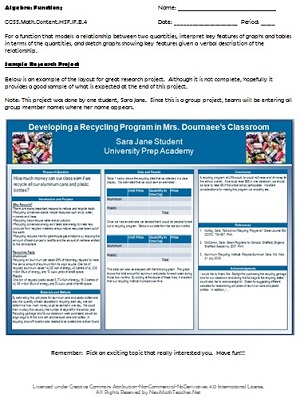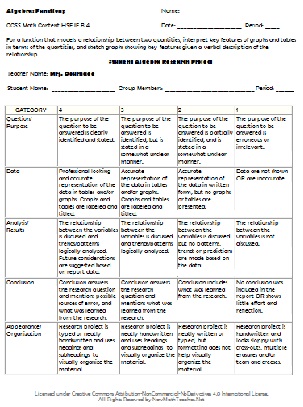How to Nurture Emotional Intelligence in Children
/ Adapted from an article written by Monica Nazareno, San Mateo Parents Club’s Newsletter Co-Editor
Jackson quickens his kid-sized strides in an attempt to hurry you, his mom, to the classroom on this busy Monday morning. At the door, parents are smiling, hugging, and waving goodbye as their children enter the classroom for the day. As the two of you stroll together toward the room, intense sobs grow louder and louder. When you enter, your gaze immediately goes across the room to Billy, who is in tears while he clings tightly to his teacher’s leg. Jackson notices Billy, looks up at you with a concerned look on his face and says, “Billy seems really upset.” At that moment, another child reaches for his Lego keychain to quietly show Billy. Next, a third child drops what he’s writing, walks over with outstretched arms and gives Billy a big hug. Soon, Billy calms down, manages a smile, and joins his friends at their spots for table work.
Emotional intelligence is the ability to manage one’s own emotions and emotionally-driven behaviors. People with high emotional intelligence have the self-awareness and confidence to control impulses and reactions in ways that increase social, academic, relational, and career success. Parent and teacher responses to children’s emotions greatly affect a child’s subsequent emotional intelligence level. By expanding emotional awareness, children can better self-regulate emotional feelings and impulses. Furthermore, they develop a better understanding of the emotions, behaviors, and motivations of people around them. These are crucial elements in achieving happiness and all-around success in life. So, what can parents and teachers do to help nurture a child’s emotional intelligence?
Begin by building awareness of your own emotions.
Consider the airline in-flight safety video mantra: “put on your own oxygen mask before attempting to assist others.” I find that I can easily go through the motions of what needs to happen and completely miss all the different emotions that I experience throughout the day. Start by taking time to notice how you yourself feel or how you find yourself reacting to a situation.
Try this: Open your child’s awareness of emotions by sharing yours with them. Identify and discuss several key emotions like happiness, sadness, anger, and excitement. What facial cues does someone show to demonstrate these emotions? What body movements or postures? Encourage your child to look you in the eyes, notice your facial expression, hear your tone of voice, and talk about what you’re feeling. It might seem a little unnatural or exaggerated in the beginning, but know that you’re expanding your child’s language and vocabulary around emotions.
Empathize with your child by naming their emotions.
Mirror your child’s emotions by describing back to them what their body and face are expressing. You can even explain to them what happened before, during, and after a situation, and eventually they will start to recognize what triggers the emotion and the consequences of them. Brainstorm various strategies for regulating these emotions and producing a positive outcome. Building emotional intelligence will also boost self-regulation as your child starts to realize what coping strategies help them. With persistence, they will internalize and access coping skills for dealing with frustration, anger, sadness, and even excessive excitement.
Try this: Describe the child’s emotion and provide context to help them understand what they’re feeling and what they can do about it. Here are some examples:
By recognizing and taking action themselves, children will eventually recognize emotions in others and be empowered to help someone else, just like the children in the story who empathized with Billy’s sadness and helped him feel better.
Offer books and media to reinforce and build upon those concepts.
Some of my favorite artwork is found in children’s books because they are exquisitely illustrated and beautifully expressive! Children’s books are wonderful learning tools for exploring emotions. As you go through books with your child, read the text and then pause and wonder together about the characters’ expressions and what they may be feeling or thinking. Many quality children’s programs, notably Daniel Tiger’s Neighborhood do a really good job of helping children develop emotional intelligence and offer opportunities for children to explore their feelings. The episodes even have catchy songs to help children and parents alike remember what we can do to manage our feelings.
Try this: Mirror play! Read some books and talk about the characters’ body language or facial expressions and try them out with your child. What does someone look like when they’re sad? Surprised? Angry? Disappointed? See how many emotions you can do!
Allow children problems to solve.
When we intervene before children have tried to solve a problem for themselves, we inhibit them from experiencing a range of emotions and learning from them. Give your child a chance to figure things out as much as they can so they can build resiliency. Offer guidance and support as needed.
Try this: Notice what other people or children are feeling and pose “Why?” questions. Explore possibilities around what might be causing the emotion and offer your child a chance to consider what they might do to affect that person. Doing so allows a child to think more outside of themselves and develop empathy for a range of situations.
Give children opportunities to care.
The child in the above story brought Billy a Lego keychain because he knew that Billy would appreciate Legos. I once had a little boy with a dairy allergy in one of my toddler classes. The teachers made the intentional decision to share that with the other children, giving them an opportunity to care more deeply about their friend. They then began to look out for him at meal and snack times; when they became more verbal asked if he could have certain foods on the menu or if the snack had dairy in it. They even made sure that his cup was always filled with soy milk.
Try this: If your child raises a question or makes an observation about someone’s feelings that you don’t have the answer to, ask them a question back and let them wonder, “What do you think that person needs?” or “How does that make you feel?” “How would you help them?” It gives them another chance to picture themselves in someone else’s shoes and to know that there’s always something that you can do for someone else.
By nurturing our children’s emotional health, we can build a more loving and kind world where there is space for empathy and compassion to flourish. To do this successfully, children must have strong habits. Here are a few basic emotional management habits to help build emotional intelligence.

STEAM Teachers: looking for ways to grow students' social intelligence and critical thinking skills within the context of a science, technology, engineering, art, or math group project? The six key areas of social growth that can strengthen STEAM educational effectiveness are social communication, nonverbal communication, group dynamics, expression, problem solving, and managing conflict (read more here). A great way to incorporate these skills into a STEAM classroom is through well thought out and structured group projects like the sample lesson and project below. Individual student roles within the group and clear, concise rubrics for assessment help build these social skills into the educational framework (see example below).
Photo Credit: woodleywonderworks on Flickr




